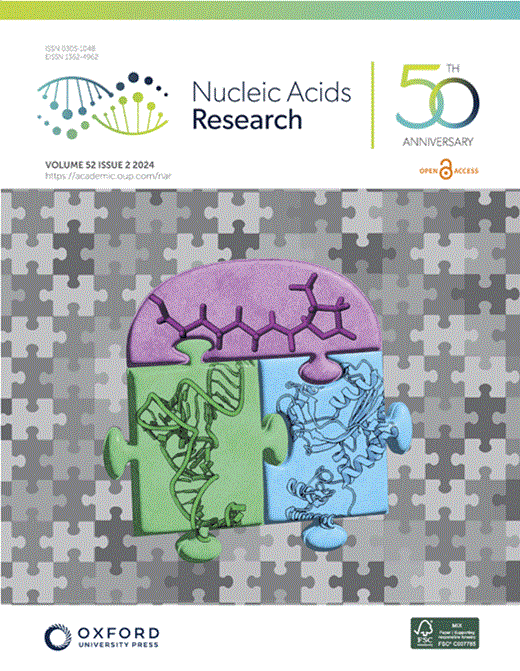Nucleotide-level characterization and improvement of l-arabinose- and l-rhamnose-inducible systems in E. coli using a high-throughput approach.
IF 16.6
2区 生物学
Q1 BIOCHEMISTRY & MOLECULAR BIOLOGY
引用次数: 0
Abstract
The commonly used arabinose- and rhamnose-inducible Escherichia coli promoters, PBAD and PRha, exhibit tight regulation through activation via their respective transcription factors, AraC and RhaS, alongside the cyclic AMP receptor protein. The mechanisms of these promoters have been characterized on a parts level, but nucleotide-level analysis has yet to be elucidated. Therefore, we describe here a massively parallel reporter assay that maps regulatory sites at the nucleotide level. The relative importance of nucleotides in each binding site is revealed, including loci not included in previous annotations. For PBAD, we confirm known sites and reveal novel binding sites involved in modulating gene expression. In PRha, we refine the length and sequence specificity of rhaI half-sites, updating previous annotations and providing nucleotide level insights into RhaS-mediated regulation. Mutations that lead to increased promoter strength, wider dynamic range, and altered basal expression are identified for both promoters. Engineered versions of PBAD and PRha promoters based on this data show improvements in dynamic range alongside a seven- and three-fold increase in promoter strength, respectively, with a slight increase in basal expression for the PBAD promoters and no significant increase for PRha. This work expands the genetic parts "toolkit" and increases the understanding of these important commonly used promoters.求助全文
约1分钟内获得全文
求助全文
来源期刊

Nucleic Acids Research
生物-生化与分子生物学
CiteScore
27.10
自引率
4.70%
发文量
1057
审稿时长
2 months
期刊介绍:
Nucleic Acids Research (NAR) is a scientific journal that publishes research on various aspects of nucleic acids and proteins involved in nucleic acid metabolism and interactions. It covers areas such as chemistry and synthetic biology, computational biology, gene regulation, chromatin and epigenetics, genome integrity, repair and replication, genomics, molecular biology, nucleic acid enzymes, RNA, and structural biology. The journal also includes a Survey and Summary section for brief reviews. Additionally, each year, the first issue is dedicated to biological databases, and an issue in July focuses on web-based software resources for the biological community. Nucleic Acids Research is indexed by several services including Abstracts on Hygiene and Communicable Diseases, Animal Breeding Abstracts, Agricultural Engineering Abstracts, Agbiotech News and Information, BIOSIS Previews, CAB Abstracts, and EMBASE.
 求助内容:
求助内容: 应助结果提醒方式:
应助结果提醒方式:


